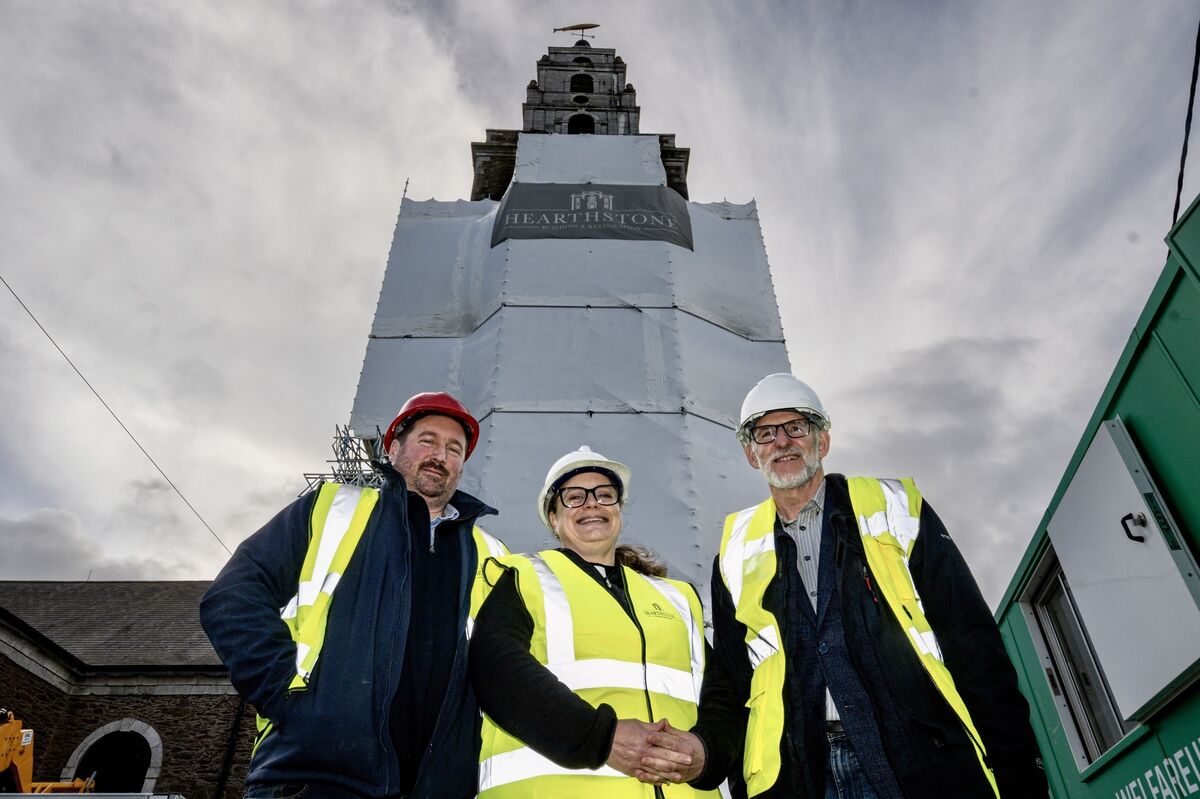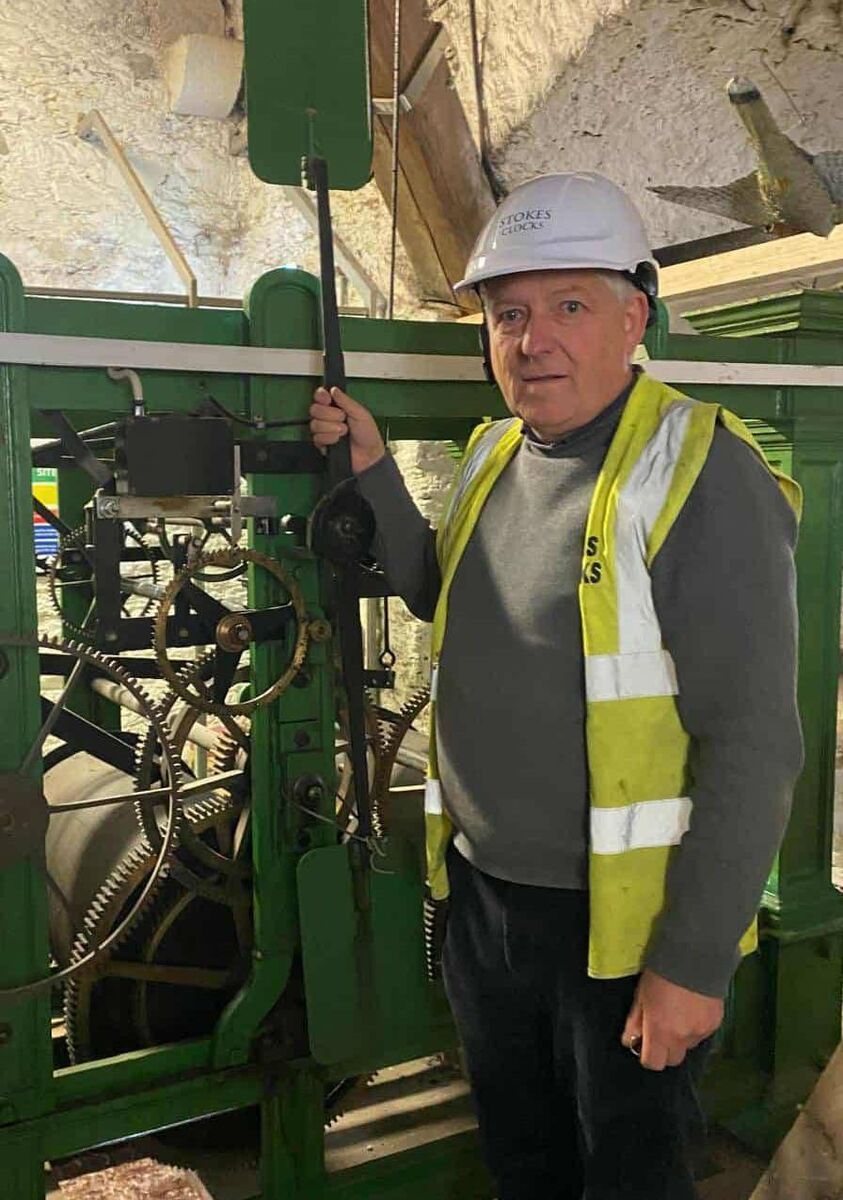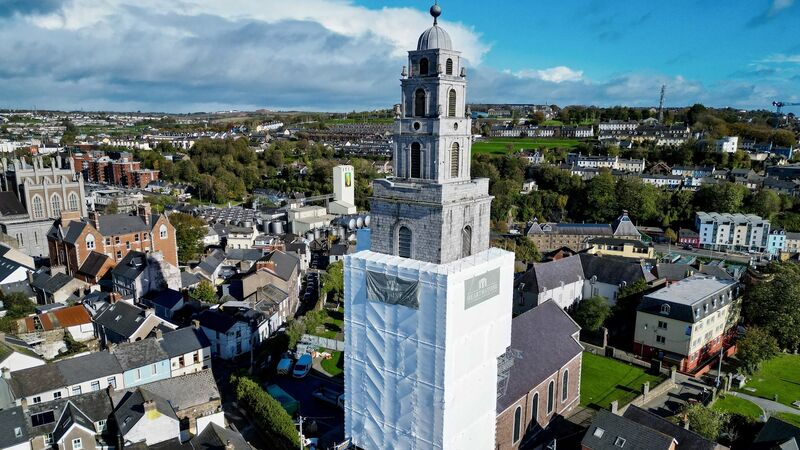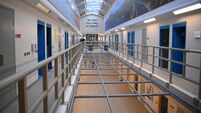While many people are looking forward to the extra hour in bed as the clocks go back this bank holiday weekend, Corkonians can’t help but feel like there is something missing.
The iconic four-faced clock tower and Shandon Bells have been notably absent of late due to restoration works.
It’s now been more than three years since the bells chimed on the hour at St Anne’s Church in Shandon — with what once made up an important part of Cork city’s acoustic backdrop fading into silence.
In addition, the historic four-faced liar’s hands and numbers have been temporarily removed as part of in depth restoration works. And now, for the first time in their history, the clocks will be invisible from view.
Shandon’s clock mechanism was introduced in 1847 by the then Cork Corporation. It wasn’t long before the timepiece earned the nickname ‘the four-faced liar’ as a nod to its unreliable timekeeping.
A total of €250,000 was allocated by Cork City Council earlier this year to repair and restore what has become an iconic fixture of Cork City’s skyline. This was the largest individual share of €700,000 in funding received by heritage projects across Cork under the Historic Structures Fund.
Keith Starr from Hearthstone in Glanmire is overseeing a team that includes Cork City Council architectural conservation officer Jessie Castle, horologist Philip Stokes, and James Bourke Architects, as well as a large number of construction workers.
Keith described having the chance to work on the clock as a “once-in-a-lifetime opportunity”.
“You only get a chance like this once in every five to 10 decades,” he told the Irish Examiner. “It’s a really unique opportunity to be able to take these things apart and understand how they are constructed.
However, the most rewarding and interesting part to me is seeing apprentices and young people work on such an iconic part of Cork city.
"The older fellas take it in their stride but it’s nice to have a new generation of people that can say they were up here and they worked on it.
"The clock is so iconic in Cork but with that comes a lot of responsibility. It is rewarding in its own way but the responsibility of having to carry out the work is an overriding feeling."
Given the historical nature of the work, he says restoration is not without its challenges.
“There is no manual for what we are doing. We had a good idea of what we might encounter. However, it’s not until you are actually up there and standing in front of the clock that you really understand the scale of this.
"The hands alone are nine feet long. When you are looking at these clocks from the ground, it’s hard to understand the scale of them. As for the work itself, it completely takes over your life.
There is nobody really in Ireland that has worked on a timepiece of this scale. The people who worked on it in the past are all gone now, bar one or two so there is nobody to really call or get advice from.”

The team is working around the clock to ensure the job is completed as quickly and safely as possible, with works expected to be completed by Christmas.
“We have been the bones of two years coming up with a plan to carry out the works and envisage everything that could happen — or that might go wrong — as best as possible,” said Keith.
“We had nine articulated lorryloads of scaffolding just to get us up there. Lots of that scaffolding had to be dropped off at the butter exchange and dropped individually into the car park and then assembled. It took four and half weeks to get us up there before any of the work even started.”
Keith said it is humbling to follow in the footsteps of James Mangan, who originally crafted the clock.
“To do this with no reference point and make a clock of this scale is remarkable,” he said.
This was the biggest clock in Europe until Big Ben was built. I think about the difference this would have made to Cork people as well because prior to that point the city fathers were paying ladies to go around and throw pebbles at people’s windows to call them for work.
"That was the idea of the clock — because the merchants of Cork had enough of the excuses from workers who were always late. You can just imagine the difference this made to people’s lives. These were among the lifechanging moments for people back then living in the northside of Cork City.”
Keith praised Cork City Council for supporting local businesses in contracting them to carry out the work.
“We are based in Glanmire and most of the lads working on this are local so it’s a big thing for them too. What’s really nice is seeing people like Philip Stokes passing on their wisdom to the younger generation. It’s also significant to see a Cork clock being fixed by a Cork company and by Cork people.”
Horologist Philip Stokes explained what is involved in the lengthy conservation process.
“All the hands and the numbers have to be stripped and removed,” Mr Stokes said.
“We have to label and reference everything as we do it. It’s all very time-consuming. Ironically, time is the one thing we don’t have. When it comes to the external parts we try to take a small amount at a time. This is more down to the worry of losing the parts so we try to have as little off site at a time as possible. Everything is meticulously labelled and referenced so there is no chance of this happening, it’s more for peace of mind.”
And Mr Stokes said the conservation process is an ongoing one — and will need to be repeated again, thanks to the impact of the weather.

“It hasn’t been accessed for at least 60 years. There is major work to be done on the face and hands as they are very weathered. There is a lot of corrosion and wear and tear due to the clocks being exposed to all the elements. They are bound to deteriorate unfortunately. Even after we do this the process will start all over again.
“What we have to do is remove all the external parts of the clock including the face the individual numbers, the hands and the metal supporting them all. The metal is having to be repaired and some parts remade due to corrosion.
“The numbers are copper with a wooden backing. This wooden backing on each number is rotting away and that all has to be replaced. The copper has to be cleaned down and primed and it’s all gold-leafed. Wear and tear on the hands is mostly down to weather. Some of them have to have parts replaced because they are corroded too far. Likewise, they have to be gold-leafed. The brief from the city council is restoration. It would be easier to replace everything but that’s not what we want to do. Instead, it has to be a much slower job.”
James Bourke, from James Bourke Architects, says he is enjoying his time working on the project.
“This is a symbol of Cork and such an important building,” Mr Bourke told the Irish Examiner.
The clock is like shorthand for Cork because everyone knows it. This is a fantastic project to work on and a huge honour for me.
Meanwhile, Reverend Meghan Farr of St Anne’s Church said her congregation is looking forward to the clock’s return.
“Because of storm damage the bells were chiming at 10 minutes past the hour,” she said. “We eventually had to switch it off because it was driving the neighbours crazy. God willing, the timing will work out and the bells will be reconnected at the same time the clock is ready to be turned back on. The neighbours miss it very much. These bells are really important to people living here because they are the sound of home. It’s a part of the area’s identity.
The story of James Mangan, the man behind the clock, is also fascinating. It’s even believed that he put forward a submission to build Big Ben but unfortunately they passed on the Irish man.
She praised Cork City Council for their support.
“We are delighted to have this relationship with Cork City Council. It was the Cork Corporation who came to the church and asked about introducing a clock in the 1840s.
“Ever since then that iconic partnership between the council and the church has always existed and it’s something we are so grateful for. Seeing this iconic feature get to be the best version of itself is going to be of great benefit to the city.”

Unlimited access. Half the price.
Try unlimited access from only €1.50 a week
Already a subscriber? Sign in
CONNECT WITH US TODAY
Be the first to know the latest news and updates













